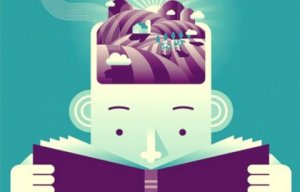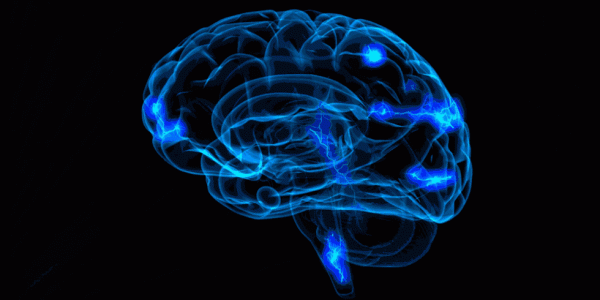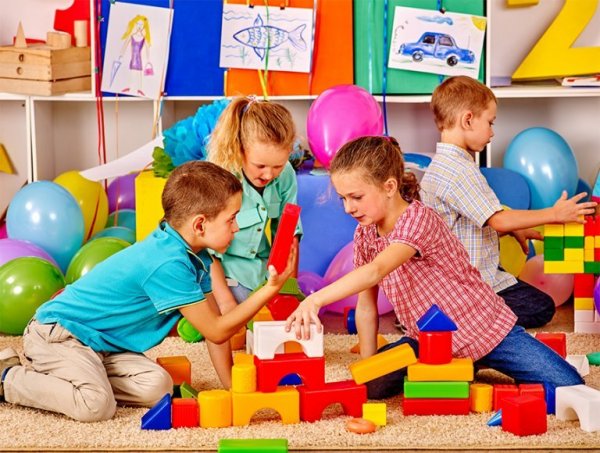Discover Educational Neuroscience


Written and verified by the psychologist Valeria Sabater
Bored children, children with dyslexia, children with dyscalculia, children with attention deficit disorder… Nowadays, children have a huge range of educational needs. Unfortunately, most schools follow similar and very limited approaches. Educational neuroscience can help in this regard.
Neuromarketing, the neuroscience of happiness, the neuroscience of creativity, educational neuroscience… neuroscience is everywhere nowadays. It’s part of a quest for deeper knowledge about ourselves and learning more about how we think, feel, learn, and make decisions.
These new discoveries go way beyond the knowledge we’ve had up to this point. By delving deeper into the very fibers of our brain and the processes that make it work, we’re learning all kinds of things, including the fact that not all children learn at the same speed. Some children develop certain structures later on, which leads to school-related problems.
You can’t pressure a child to learn something if they’re not ready to. That pressure only leads to frustration, fear, and avoidance.

Educational neuroscience: A new educational model
The scientific world is making some amazing discoveries about learning and memory that still haven’t made their way into school curriculums. There’s a clear disconnect between what neuroscience is saying about child and adolescent development and what we see in classrooms.
We’re still focused on the idea that all children need to have the same skill levels in all the same subjects. We don’t move past our traditional methods: pointing out mistakes and singling out kids who fall behind, get lost, have trouble with math, have trouble reading because the letters move around in front of their eyes, etc.
All our abilities as humans, including our ability to learn, aren’t innate. Attitude has nothing to do with it. Our brain makes them possible. Thus, if we understood how the brain works, we’d be able to better structure classes, including both daily lesson plans and overall teaching goals.
What’s the goal of educational neuroscience?
Traditional education has many limitations. Although there are good teachers out there, something else is missing. The educational world needs a stronger scientific foundation and an understanding of cognitive development. The goal of educational neuroscience is just that: to incorporate science into learning.
That means taking the latest findings in neuroscience and cognitive science into account to achieve a more logical, inclusive, and effective form of education.
But we also have to bust some myths about education, such as the ones that state that we only use 10% of our brains or that one hemisphere of our brain is artistic, while the other is mathematical.

How do we apply it to the classroom?
Although there are many things that have yet to be discovered, we’ve advanced a lot. Educational policies are starting to change. We’re also seeing some changes in special education models.
The overall outlook looks positive, but we still need to see a lot more social change, especially in terms of educational policies.
Below, discover how educational neuroscience helps in classroom settings:
Better identification of individual needs
It’s important to be able to identify children with learning disabilities, dyslexia, or extremely high mental capabilities early on. That way, you can develop a personalized learning strategy for them and help them learn to the best of their ability.
Positive and stimulating educational environments
Children need positive and stimulating environments to learn. That means having teachers who know how to change things up and make a real effort to give students new challenges, all while keeping a high academic standard.
Learning as a group
Children have an easier time remembering information when they work in small groups. Groups make learning more dynamic for them and make all the new information feel more important. Plus, it’s a great way to encourage cooperation and respect with their classmates.

Telling students about educational neuroscience
Children should understand how they learn, too. Neuroscientists say that it’s actually extremely beneficial for children to learn about executive functions. That means teaching them about things such as how attention works and how to know when they’re angry, sad, tired, etc.
It’s also vital for them to learn how to manage their emotions, as it’ll foster self-control and help them connect better with their school tasks.
Cognitive tutoring and personalized education
This is one of the most complicated parts of educational neuroscience and we’d need trained teachers for it. Teachers need to be able to intuit what learning path is best for each and every student.
You also have to know how students are doing regarding attention, information retention, problem-solving, motivation, and creativity. This is the only way you’ll be able to come up with effective strategies for each student to reach their potential.
Changing school hours
According to educational neuroscience, we need to change school hours. Some studies have shown that it’d be best if children went to school year-round, with shorter summer vacations but more frequent breaks (for example, a week-long vacation every three weeks).
Educational neuroscience also states that we need to change middle and high school hours so that classes start at approximately 10:30 or 11:00 a.m. This is because teenagers’ brains need more hours of sleep and their brains aren’t as active in the early morning.

As we learn more about our brains and our learning processes, we need to make sure those discoveries make their way into classrooms. We simply can’t stay stuck in the past, with all the obsolete techniques and strategies that just lead to frustrated, unmotivated students and concerned parents.
We have to be bold and innovative and teach in a way that lines up with childhood brain development. This is the only way for us to help children reach their true potential and to have our students be truly invested in their own learning.
Bored children, children with dyslexia, children with dyscalculia, children with attention deficit disorder… Nowadays, children have a huge range of educational needs. Unfortunately, most schools follow similar and very limited approaches. Educational neuroscience can help in this regard.
Neuromarketing, the neuroscience of happiness, the neuroscience of creativity, educational neuroscience… neuroscience is everywhere nowadays. It’s part of a quest for deeper knowledge about ourselves and learning more about how we think, feel, learn, and make decisions.
These new discoveries go way beyond the knowledge we’ve had up to this point. By delving deeper into the very fibers of our brain and the processes that make it work, we’re learning all kinds of things, including the fact that not all children learn at the same speed. Some children develop certain structures later on, which leads to school-related problems.
You can’t pressure a child to learn something if they’re not ready to. That pressure only leads to frustration, fear, and avoidance.

Educational neuroscience: A new educational model
The scientific world is making some amazing discoveries about learning and memory that still haven’t made their way into school curriculums. There’s a clear disconnect between what neuroscience is saying about child and adolescent development and what we see in classrooms.
We’re still focused on the idea that all children need to have the same skill levels in all the same subjects. We don’t move past our traditional methods: pointing out mistakes and singling out kids who fall behind, get lost, have trouble with math, have trouble reading because the letters move around in front of their eyes, etc.
All our abilities as humans, including our ability to learn, aren’t innate. Attitude has nothing to do with it. Our brain makes them possible. Thus, if we understood how the brain works, we’d be able to better structure classes, including both daily lesson plans and overall teaching goals.
What’s the goal of educational neuroscience?
Traditional education has many limitations. Although there are good teachers out there, something else is missing. The educational world needs a stronger scientific foundation and an understanding of cognitive development. The goal of educational neuroscience is just that: to incorporate science into learning.
That means taking the latest findings in neuroscience and cognitive science into account to achieve a more logical, inclusive, and effective form of education.
But we also have to bust some myths about education, such as the ones that state that we only use 10% of our brains or that one hemisphere of our brain is artistic, while the other is mathematical.

How do we apply it to the classroom?
Although there are many things that have yet to be discovered, we’ve advanced a lot. Educational policies are starting to change. We’re also seeing some changes in special education models.
The overall outlook looks positive, but we still need to see a lot more social change, especially in terms of educational policies.
Below, discover how educational neuroscience helps in classroom settings:
Better identification of individual needs
It’s important to be able to identify children with learning disabilities, dyslexia, or extremely high mental capabilities early on. That way, you can develop a personalized learning strategy for them and help them learn to the best of their ability.
Positive and stimulating educational environments
Children need positive and stimulating environments to learn. That means having teachers who know how to change things up and make a real effort to give students new challenges, all while keeping a high academic standard.
Learning as a group
Children have an easier time remembering information when they work in small groups. Groups make learning more dynamic for them and make all the new information feel more important. Plus, it’s a great way to encourage cooperation and respect with their classmates.

Telling students about educational neuroscience
Children should understand how they learn, too. Neuroscientists say that it’s actually extremely beneficial for children to learn about executive functions. That means teaching them about things such as how attention works and how to know when they’re angry, sad, tired, etc.
It’s also vital for them to learn how to manage their emotions, as it’ll foster self-control and help them connect better with their school tasks.
Cognitive tutoring and personalized education
This is one of the most complicated parts of educational neuroscience and we’d need trained teachers for it. Teachers need to be able to intuit what learning path is best for each and every student.
You also have to know how students are doing regarding attention, information retention, problem-solving, motivation, and creativity. This is the only way you’ll be able to come up with effective strategies for each student to reach their potential.
Changing school hours
According to educational neuroscience, we need to change school hours. Some studies have shown that it’d be best if children went to school year-round, with shorter summer vacations but more frequent breaks (for example, a week-long vacation every three weeks).
Educational neuroscience also states that we need to change middle and high school hours so that classes start at approximately 10:30 or 11:00 a.m. This is because teenagers’ brains need more hours of sleep and their brains aren’t as active in the early morning.

As we learn more about our brains and our learning processes, we need to make sure those discoveries make their way into classrooms. We simply can’t stay stuck in the past, with all the obsolete techniques and strategies that just lead to frustrated, unmotivated students and concerned parents.
We have to be bold and innovative and teach in a way that lines up with childhood brain development. This is the only way for us to help children reach their true potential and to have our students be truly invested in their own learning.
This text is provided for informational purposes only and does not replace consultation with a professional. If in doubt, consult your specialist.







